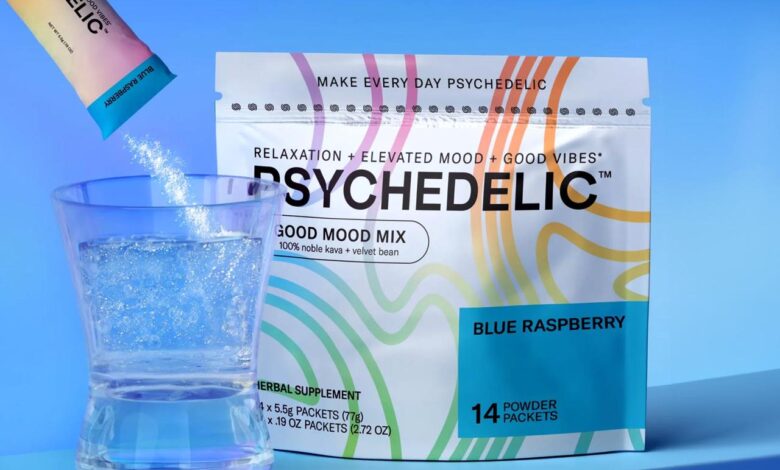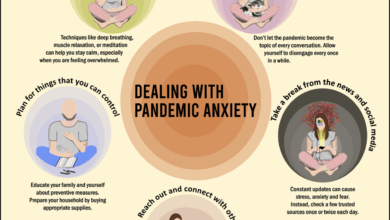
Psychedelic drugs mood benefits are a fascinating area of study, exploring the unique ways these substances can impact our emotional landscape. From ancient rituals to modern therapeutic approaches, the use of psychedelics has a rich history intertwined with profound shifts in mood. This exploration delves into the various types of mood states that can be affected, the mechanisms behind these alterations, and the potential for long-term benefits.
We’ll also examine the research, safety considerations, therapeutic applications, and the complex ethical and societal implications surrounding this emerging field.
This exploration will analyze the neurochemical processes at play, differentiating the effects of various psychedelic substances. We will also present a table summarizing common effects, potential risks, and safety considerations. Further, the discussion will examine how these substances may improve mood, reduce anxiety, or enhance creativity. The potential for long-term mood benefits and positive emotional outcomes will be carefully considered.
Introduction to Psychedelic Drugs and Mood
Psychedelic drugs, often categorized as hallucinogens, are substances that alter perception, thought, and mood. They induce profound changes in consciousness, impacting sensory experiences and emotional responses. These substances have a long and complex history, intertwined with various cultures and spiritual practices. While their potential for therapeutic use is gaining recognition, the potential risks and responsible use are crucial aspects to understand.Psychedelic experiences can profoundly affect a wide range of mood states.
Users may report feelings of euphoria, heightened creativity, and profound introspection. Conversely, some experiences may include anxiety, fear, or a sense of disorientation. The subjective nature of these experiences makes it difficult to predict the precise mood response in any individual.
Historical Context and Cultural Significance
The use of psychedelic substances dates back centuries, with evidence of their use in various cultures for religious ceremonies, healing rituals, and artistic expression. Historically, these substances were often integrated into spiritual and cultural practices, signifying a connection to the divine or the natural world.
Types of Psychedelic Drugs
Psychedelic drugs are often classified by their chemical structure and the specific effects they produce. While precise categorization can be complex, some common types include:
- Lysergic acid diethylamide (LSD): A potent synthetic hallucinogen, known for its profound perceptual alterations and emotional impact. It has been used experimentally for therapeutic purposes, but its unpredictable effects necessitate careful handling and monitoring.
- Mescaline: Derived from the peyote cactus, mescaline is a naturally occurring psychedelic that has been used in Native American spiritual ceremonies for generations. It often produces a range of experiences, from mystical visions to altered sensory perceptions.
- Psilocybin: Found in certain mushrooms, psilocybin is a powerful psychedelic that has shown promise in treating mental health conditions like depression and anxiety. Its use in therapy is gaining traction due to its reported potential to foster personal growth and insight.
- Dimethyltryptamine (DMT): A naturally occurring psychedelic compound, often associated with profound spiritual experiences and altered states of consciousness. The potent effects and relatively short duration of DMT experiences necessitate careful preparation and support.
Common Effects on Mood
Psychedelic experiences can evoke a broad spectrum of emotional responses. Users may report feelings of:
- Euphoria and Joy: Experiencing intense feelings of happiness and well-being, often accompanied by a sense of connection to something larger than oneself.
- Anxiety and Fear: Potential for feelings of unease, panic, and disorientation. These negative effects can be mitigated with proper preparation, support, and a safe environment.
- Altered Sensory Perception: Changes in the perception of colors, sounds, shapes, and time are common. These changes can be both enjoyable and disorienting.
- Introspection and Self-Discovery: Deep insights into oneself and one’s experiences are frequently reported. This aspect is often considered a key component of the therapeutic potential of psychedelics.
Potential Risks
While psychedelics hold potential therapeutic benefits, it is crucial to acknowledge potential risks associated with their use:
| Drug Type | Common Effects on Mood | Potential Risks |
|---|---|---|
| LSD | Intense perceptual alterations, emotional shifts | Anxiety, paranoia, panic attacks, flashbacks, psychological distress |
| Mescaline | Mystical experiences, altered sensory perception | Nausea, vomiting, paranoia, anxiety |
| Psilocybin | Insight, introspection, spiritual experiences | Anxiety, panic attacks, visual disturbances, confusion |
| DMT | Spiritual experiences, profound altered states | Anxiety, paranoia, flashbacks, psychological distress, potential for severe reactions in vulnerable individuals |
Mechanisms of Mood Alteration
Psychedelic drugs exert their effects on mood through complex interactions with neurotransmitter systems in the brain. These interactions often involve alterations in the balance of various neurochemicals, leading to profound shifts in emotional states. While the precise mechanisms are still being investigated, emerging research suggests that these drugs can influence the way neurons communicate, impacting mood regulation and perception.The specific neurochemical mechanisms underlying mood changes differ across various psychedelic substances.
Factors like the chemical structure of the drug, its binding affinity to specific receptors, and its interaction with metabolic pathways all contribute to the unique profile of effects experienced. For instance, LSD and psilocybin, while both affecting serotonin pathways, likely have different downstream consequences on neural networks and mood regulation.
Neurotransmitter Systems and Brain Regions
The brain’s intricate network of neurons and neurotransmitters plays a critical role in mood regulation. Psychedelics are thought to influence these systems, potentially leading to alterations in mood. Serotonin, dopamine, and glutamate are key neurotransmitters involved in mood regulation. Psychedelics are believed to affect these neurotransmitters through various mechanisms, including receptor binding and modulation of their release and reuptake.
Recent studies on psychedelic drugs are highlighting some interesting mood benefits. While the research is ongoing, it’s fascinating to see how these substances can potentially affect mental well-being. Interestingly, a new study on epidurals, discussed in this article on epidurals and their impact on child development , shows no link between epidural use and developmental issues in children.
This reinforces the idea that careful research into different substances and their potential effects is crucial for a deeper understanding of the human mind and body.
Specific Neurotransmitter Effects of Psychedelics
Psychedelics can significantly impact the delicate balance of neurotransmitters in the brain, resulting in diverse effects on mood. These alterations often involve changes in the release, reuptake, and receptor activity of key neurochemicals. Serotonin, a neurotransmitter deeply connected to mood, is a primary target for many psychedelics. These substances can disrupt the normal functioning of serotonin pathways, potentially leading to increased or decreased activity of serotonin receptors and, subsequently, mood changes.
Comparison of Psychedelic Effects on Neurotransmitter Systems
| Psychedelic | Primary Neurotransmitter System Affected | Potential Effects on Mood |
|---|---|---|
| LSD | Serotonin (5-HT2A receptors) | Altered perception, emotional intensity, and introspection; potential for euphoria, anxiety, or dysphoria. |
| Psilocybin | Serotonin (5-HT2A receptors) | Similar to LSD, with potential for profound mystical experiences and emotional breakthroughs; reported reductions in anxiety and depression in some individuals. |
| MDMA | Serotonin, norepinephrine, dopamine | Increased empathy, feelings of connection, and emotional openness; potential for euphoria and increased sociability. |
| Mescaline | Serotonin (5-HT2A receptors) and dopamine | Hallucinations, altered perception, and intense emotional experiences; can induce feelings of euphoria or dysphoria, depending on individual factors. |
Note: This table provides a simplified overview and does not encompass the full complexity of psychedelic effects. Individual responses to psychedelics can vary significantly.
Types of Mood Benefits
Psychedelic substances, when used responsibly and under appropriate guidance, can unlock a spectrum of positive mood alterations. These experiences often involve profound shifts in perception and emotional processing, potentially leading to lasting improvements in mental well-being. This section explores the various ways psychedelics can enhance mood, from reducing anxiety to fostering creativity and emotional processing. It also delves into the potential for long-term mood benefits.
Different Mechanisms of Mood Enhancement
Psychedelics can influence mood through complex interactions with neurotransmitter systems in the brain. These substances can modulate serotonin, dopamine, and glutamate pathways, influencing emotional regulation, cognitive function, and overall mood state. The specific mechanisms are still under active research, but preliminary findings suggest that these interactions contribute to the observed mood-boosting effects. Furthermore, the unique experience of a psychedelic journey often triggers introspection and emotional processing, potentially leading to profound insights and behavioral changes.
Reducing Anxiety and Promoting Emotional Regulation
Many users report a reduction in anxiety levels after a psychedelic experience. This can be attributed to a heightened sense of self-awareness and acceptance during the altered state of consciousness. The experience may encourage emotional processing, allowing individuals to confront and integrate previously suppressed or unresolved emotions. The resulting emotional regulation can have a positive impact on long-term anxiety management.
Enhancing Creativity and Insight, Psychedelic drugs mood benefits
Psychedelics have been linked to heightened creativity and novel insights. The altered perception and sensory experience can disrupt typical thought patterns, encouraging divergent thinking and unconventional problem-solving approaches. This effect is observed in various artistic and scientific endeavors, where the ability to connect seemingly disparate ideas is crucial.
Promoting Emotional Processing and Acceptance
The altered state of consciousness induced by psychedelics can facilitate emotional processing. Users often report confronting and integrating previously suppressed or unresolved emotions. This process of emotional integration can lead to a deeper understanding of oneself and a greater sense of acceptance. This can translate into improved self-awareness and emotional resilience.
Potential Long-Term Mood Benefits
The effects of psychedelic experiences can extend far beyond the immediate journey. Some individuals report long-term improvements in mood, including reduced anxiety, increased emotional regulation, and enhanced well-being. These sustained effects may stem from the restructuring of neural pathways and the integration of emotional experiences. However, further research is needed to fully understand the long-term mechanisms and efficacy of these effects.
Positive Emotional Outcomes Following Psychedelic Use
- Increased self-awareness and acceptance
- Reduced anxiety and improved emotional regulation
- Enhanced creativity and problem-solving abilities
- Deeper emotional processing and integration
- Increased empathy and compassion
- Greater sense of purpose and meaning
- Improved overall well-being and life satisfaction
These outcomes highlight the potential of psychedelics to foster positive transformations in mental health. Individual experiences and responses vary, but the potential for lasting positive change is a key area of interest in the field.
Mood Benefits and Associated Mechanisms
| Mood Benefit | Associated Mechanism |
|---|---|
| Reduced anxiety | Heightened self-awareness, emotional processing, altered perception of emotions |
| Enhanced creativity | Disruption of typical thought patterns, divergent thinking, unconventional problem-solving |
| Improved emotional processing | Facilitation of confronting and integrating suppressed or unresolved emotions |
| Increased emotional regulation | Integration of emotional experiences, restructuring of neural pathways |
| Greater self-acceptance | Enhanced self-awareness, integration of previously suppressed emotions |
This table summarizes some key mood benefits and their potential underlying mechanisms. Ongoing research is crucial to further refine our understanding of these complex interactions.
Research and Evidence

The burgeoning field of psychedelic research offers compelling insights into the potential mood-boosting effects of these substances. However, the current body of research, while promising, is not without its limitations and potential biases. Understanding these nuances is crucial for interpreting the findings and for developing responsible and effective therapeutic applications.
Current Research Summary
A significant body of research explores the impact of psychedelics on mood disorders. These studies often focus on individuals experiencing depression, anxiety, or PTSD. Common findings suggest that psychedelics can induce profound and lasting changes in mood, often leading to improvements in symptoms. For example, studies have shown a reduction in depressive symptoms and an increase in positive affect following psychedelic therapy.
This positive feedback loop can lead to sustained improvements in mental well-being.
Research Methodologies
Various methodologies are employed in psychedelic research, often including controlled trials and case studies. Controlled trials typically involve randomized groups, treatment and control conditions, and standardized assessments to measure mood changes. Researchers employ various questionnaires and scales to quantify mood, anxiety, and other relevant psychological parameters before, during, and after psychedelic administrations. Case studies, while valuable for exploring individual experiences, often lack the statistical rigor of controlled trials, but they provide qualitative data about the lived experiences of participants.
Limitations of Existing Research
Current research faces several limitations. Sample sizes in some studies are relatively small, potentially hindering the generalizability of findings. Furthermore, the duration of follow-up periods in some studies is short, which may not capture the long-term effects of psychedelic interventions. Ethical considerations also play a significant role in study design. The potential for adverse effects necessitates careful monitoring and stringent safety protocols.
Potential Biases in Research
Potential biases in psychedelic research can arise from various sources. Researchers’ expectations or preconceived notions about the effectiveness of psychedelics may inadvertently influence the interpretation of results. Selection bias, where participants are not randomly assigned to groups, can also introduce a skewed representation of the population. Funding sources for research, and the potential for conflicts of interest, can also be a factor.
Comparison of Research Studies
| Study | Methodology | Sample Size | Key Findings | Limitations |
|---|---|---|---|---|
| Study 1 (Example) | Double-blind, placebo-controlled trial | 50 participants | Significant reduction in depressive symptoms in the psychedelic group compared to the placebo group. | Short follow-up period, limited diversity in participants. |
| Study 2 (Example) | Open-label case series | 15 participants | Reports of sustained improvements in mood and well-being after treatment. | Lack of control group, limited statistical power. |
| Study 3 (Example) | Randomized controlled trial | 100 participants | Positive effects on anxiety observed in the psychedelic group, but no significant difference in PTSD symptoms. | Potential for placebo effect, complex nature of PTSD. |
Note: This table provides hypothetical examples. Actual studies would include more detailed information. The table highlights the diversity of methodologies and the varying outcomes reported across studies.
Safety and Considerations
Psychedelic experiences, while potentially beneficial for mood, require careful consideration and responsible use. Understanding the potential risks and employing safety protocols are crucial for maximizing positive outcomes and minimizing adverse effects. A lack of proper guidance and preparation can lead to negative experiences and hinder the therapeutic potential of these substances.Responsible psychedelic use necessitates a strong emphasis on safety.
This involves careful selection of a qualified facilitator, comprehensive pre-trip preparation, and ongoing support during and after the experience. Individual vulnerability factors, such as pre-existing mental health conditions, should also be considered.
Potential Risks Related to Mood
Psychedelic experiences can significantly impact mood, both positively and negatively. While the potential for profound emotional breakthroughs is substantial, the unpredictable nature of these substances necessitates a cautious approach. Negative mood reactions, such as anxiety, panic attacks, or flashbacks, are possible, particularly if the user isn’t prepared or if the environment isn’t supportive. These experiences can be distressing and prolonged, highlighting the importance of a safe and controlled setting.
Furthermore, the potential for disorientation and confusion during the experience underscores the need for a knowledgeable guide or facilitator.
Importance of Responsible Use and Guidance
Responsible use of psychedelic substances necessitates a structured approach involving thorough preparation and ongoing support. This includes a pre-trip assessment to identify potential risks and vulnerabilities. The presence of a trained facilitator or guide is essential to manage potential negative experiences and offer immediate support if needed. The facilitator plays a vital role in guiding the user through the experience, ensuring a safe and supportive environment.
Examples of Potential Negative Mood Side Effects
Negative mood reactions, although less common, can occur during or after a psychedelic experience. These include increased anxiety, panic attacks, paranoia, or feelings of depersonalization. In some cases, a user might experience prolonged feelings of sadness, grief, or confusion. Furthermore, pre-existing mental health conditions can be exacerbated by psychedelic use, emphasizing the need for careful assessment and preparation.
Safety Precautions and Considerations for Psychedelic Use
| Safety Consideration | Explanation |
|---|---|
| Pre-trip Assessment | A thorough evaluation by a qualified professional to assess mental health status, pre-existing conditions, and potential risks. This is critical to identify any potential vulnerabilities. |
| Supportive Environment | Creating a safe, supportive, and controlled environment is paramount. This includes the presence of a facilitator or guide to provide support during the experience. |
| Informed Consent | Understanding the potential risks and benefits of the experience, as well as the role of the facilitator. Informed consent is crucial for responsible use. |
| Post-trip Support | Providing ongoing support and monitoring after the experience to address any potential lingering effects or complications. |
| Dosage and Timing | Strictly adhering to recommended dosages and timings as prescribed by a qualified facilitator. Improper dosing can lead to unwanted consequences. |
Potential Therapeutic Applications
Psychedelics, once largely relegated to the fringes of scientific inquiry, are now emerging as potential game-changers in the treatment of various mental health conditions. Their unique ability to alter brain activity and access deeper psychological layers suggests a capacity to address underlying issues often missed by traditional methods. This exploration delves into the exciting possibilities of psychedelic-assisted therapies and compares them to established treatments.This approach, however, is not without its complexities.
Careful consideration of potential risks, rigorous safety protocols, and the development of standardized treatment protocols are essential for harnessing the therapeutic potential of these substances responsibly. The journey toward integrating psychedelics into mainstream mental health care requires a collaborative effort from researchers, clinicians, and policymakers to ensure ethical and effective implementation.
Potential Therapeutic Applications for Mood Disorders
Traditional treatments for mood disorders often focus on symptom management rather than addressing the root causes. Psychedelic-assisted therapies, on the other hand, aim to induce profound shifts in the patient’s perspective and understanding of their condition, potentially leading to lasting improvements. This approach targets underlying neural pathways and cognitive patterns contributing to the disorder.
Comparison with Traditional Treatments
Traditional treatments for mood disorders, such as depression and anxiety, primarily rely on medication and psychotherapy. While effective for some individuals, these methods often fail to address the root causes of the disorder or the underlying emotional and psychological factors contributing to the symptoms. Psychedelics, through their ability to induce altered states of consciousness, can facilitate deeper introspection and emotional processing, potentially providing a more holistic approach to treatment.
This may lead to more profound and lasting changes compared to treatments that primarily target the symptoms.
While some psychedelic drugs can surprisingly boost mood and well-being, it’s important to remember that their effects are complex and varied. This is different from the often-touted, but scientifically dubious, claims about honey and garlic for weight loss, which are frequently promoted as quick fixes. However, a deeper understanding of how these substances impact the brain could potentially lead to more effective and safe mood-boosting strategies in the future.
Exploring alternative approaches like examining the potential of psychedelic drugs to enhance mental well-being is important and requires further research. For those looking to explore alternative weight loss remedies, a great place to start is with information on honey and garlic for weight loss.
Examples of Conditions with Potential Benefits
Psychedelic-assisted therapies show promise for a variety of conditions, particularly those with a complex emotional or psychological component. Examples include treatment-resistant depression, anxiety disorders, and post-traumatic stress disorder (PTSD). The capacity for psychedelics to facilitate emotional processing and insight could offer substantial advantages in these cases.
Table of Potential Therapeutic Use of Different Psychedelics
| Psychedelic | Potential Therapeutic Applications | Mechanism of Action (simplified) | Examples of Conditions |
|---|---|---|---|
| Psilocybin (Magic Mushrooms) | Depression, anxiety, end-of-life distress | Alters serotonin pathways, promotes neuroplasticity | Treatment-resistant depression, anxiety disorders, spiritual distress in terminally ill patients |
| LSD | Anxiety, depression, addiction | Alters neurotransmitter systems, facilitates emotional processing | Anxiety disorders, PTSD, addiction |
| MDMA (Ecstasy) | PTSD, social anxiety, depression | Increases oxytocin and serotonin, promotes bonding and emotional regulation | PTSD, social anxiety, specific forms of depression, trauma-related disorders |
Ethical and Societal Implications
Psychedelic therapies, while showing promise for mood enhancement, raise complex ethical and societal concerns. Navigating these issues is crucial to ensure responsible and equitable access to these powerful tools. The potential for misuse, societal shifts, and cultural clashes must be carefully considered.
Ethical Implications of Psychedelic Mood Alteration
The ethical implications of using psychedelics to alter mood revolve around informed consent, potential for harm, and equitable access. Strict protocols and rigorous safety measures are necessary to prevent misuse and negative consequences. Carefully designed clinical trials and ongoing monitoring are paramount for assessing the long-term effects and mitigating potential risks. Informed consent, crucial in any medical intervention, is amplified in the context of psychedelics, given their profound impact on consciousness.
Clear communication of potential risks and benefits, including both short-term and long-term effects, is essential.
While some psychedelic drugs show promise in boosting mood and reducing anxiety, it’s crucial to remember the stark reality of rising substance abuse issues. For instance, alcohol-related deaths have doubled in just two decades, highlighting the severe consequences of risky behaviors. alcohol related deaths double in two decades Despite these sobering statistics, carefully researched and regulated use of psychedelics might offer a valuable pathway to mental well-being for some.
Societal Perspectives on Psychedelic Use
Societal perspectives on psychedelic drugs vary widely. Some view them as tools for personal growth and healing, while others maintain reservations about their potential for misuse and negative consequences. These differing views often reflect underlying cultural beliefs and historical experiences with similar substances. Understanding these varying viewpoints is vital for developing policies and strategies that address both the benefits and challenges of psychedelic use in a diverse society.
Cultural Views on Psychedelics Across Societies
Cultural views on psychedelics demonstrate significant diversity. In some cultures, these substances are deeply integrated into spiritual or religious practices, serving as a means of connection with the divine or altered states of consciousness. In contrast, other cultures hold strong reservations or prohibitions against their use, often associating them with harmful or undesirable outcomes. This contrast highlights the importance of cultural sensitivity and context when discussing psychedelic therapies.
Potential Impact on Societal Norms
The integration of psychedelic therapies into mainstream medicine could significantly impact societal norms surrounding mental health, substance use, and personal experiences. Acceptance of altered states of consciousness could lead to a more open and inclusive approach to mental well-being. However, it also poses the risk of misinterpretations and potentially widening societal divisions if not approached with careful consideration.
Table Demonstrating Societal and Cultural Views on Psychedelic Drugs
| Culture/Society | General View | Spiritual/Religious Context | Potential Concerns |
|---|---|---|---|
| Indigenous cultures in South America (e.g., Ayahuasca ceremonies) | Often integrated into spiritual practices, viewed as a sacred path | Central role in ceremonies, facilitating connection with the spirit world | Potential for misuse or inappropriate use outside traditional contexts |
| Western cultures (e.g., United States) | Historically viewed with suspicion, now undergoing a shift towards acceptance in some circles | Limited or no integration into mainstream religious practices | Concerns about safety, addiction, and potential for negative psychological experiences |
| Eastern cultures (e.g., certain traditions in India) | Historically used in specific religious/spiritual contexts | Potentially connected to meditation practices, but varied views exist | Concerns about disrupting cultural traditions and potential for misinterpretations |
Future Directions

The psychedelic renaissance is upon us, and the future of psychedelic research holds immense promise for understanding and treating a wide range of mental health conditions. Moving forward, the focus should be on translating promising research findings into practical, accessible, and safe therapeutic interventions. This requires a multifaceted approach, combining rigorous scientific investigation with careful ethical considerations and societal implications.The exploration of psychedelic-assisted therapies isn’t just about treating symptoms; it’s about delving into the fundamental mechanisms of mood regulation, opening new pathways for understanding the human mind itself.
This necessitates a proactive and collaborative effort across disciplines, from neuroscience and psychiatry to psychology and sociology.
Potential Areas for Future Research
A deeper understanding of the complex interplay between psychedelic compounds and the brain’s neural pathways is crucial. Further investigation into the specific neurochemical mechanisms, including the role of serotonin 2A receptors, glutamate, and other neurotransmitters, will help us tailor treatments for specific conditions. Furthermore, exploring the long-term effects of psychedelic therapies on brain structure and function will provide valuable insights.
Improved Treatments and Understanding of the Human Mind
Psychedelic-assisted therapies have shown potential in treating conditions like depression, anxiety, and addiction. Future research should focus on developing standardized protocols for administering these therapies, ensuring consistent quality and safety. This includes refining the selection criteria for patients, optimizing the dosage and administration methods, and developing effective strategies for managing potential side effects. Ultimately, understanding the unique responses of individual patients will lead to more personalized and effective treatment approaches.
Mechanisms of Psychedelic Drug Effects on Mood
Investigating the long-term effects of psychedelic drugs on mood regulation is a significant area for future research. This includes exploring the potential for long-lasting changes in brain structure and function, which could lead to sustained improvements in mental well-being. Researchers must also investigate how individual genetic predispositions and life experiences interact with psychedelic drug effects to predict individual responses.
Future Research Possibilities Regarding Psychedelic Drug Use
A crucial future direction is developing effective strategies for integrating psychedelic-assisted therapies into existing healthcare systems. This involves establishing training programs for healthcare professionals to administer these therapies safely and effectively, as well as developing clear guidelines for patient selection and treatment protocols. Further research into the specific psychological mechanisms through which psychedelics facilitate healing could yield invaluable insights for the future.
This includes exploring the role of altered states of consciousness and the therapeutic potential of altered sensory perception.
Potential Innovations in Research and Treatment
Combining psychedelic therapies with other evidence-based treatments, such as cognitive behavioral therapy (CBT) or mindfulness practices, may offer synergistic benefits. This integrated approach could enhance the therapeutic effects of psychedelics and create more comprehensive treatment strategies. Furthermore, the development of novel psychedelic compounds with enhanced efficacy and reduced side effects could revolutionize the field. The potential for personalized medicine, where treatment protocols are tailored to individual genetic profiles and clinical histories, represents a promising innovation in psychedelic therapy.
Conclusive Thoughts: Psychedelic Drugs Mood Benefits
In conclusion, the potential mood benefits of psychedelic drugs are a complex and evolving area of research. While promising, responsible use and rigorous study are essential. The potential therapeutic applications, coupled with the significant ethical and societal considerations, necessitate a cautious yet open-minded approach. Future research will be crucial to unlock the full potential of these substances while minimizing potential risks and maximizing benefits.
This exploration provides a starting point for understanding the intricate relationship between psychedelics and mood, prompting further discussion and inquiry into this fascinating field.





